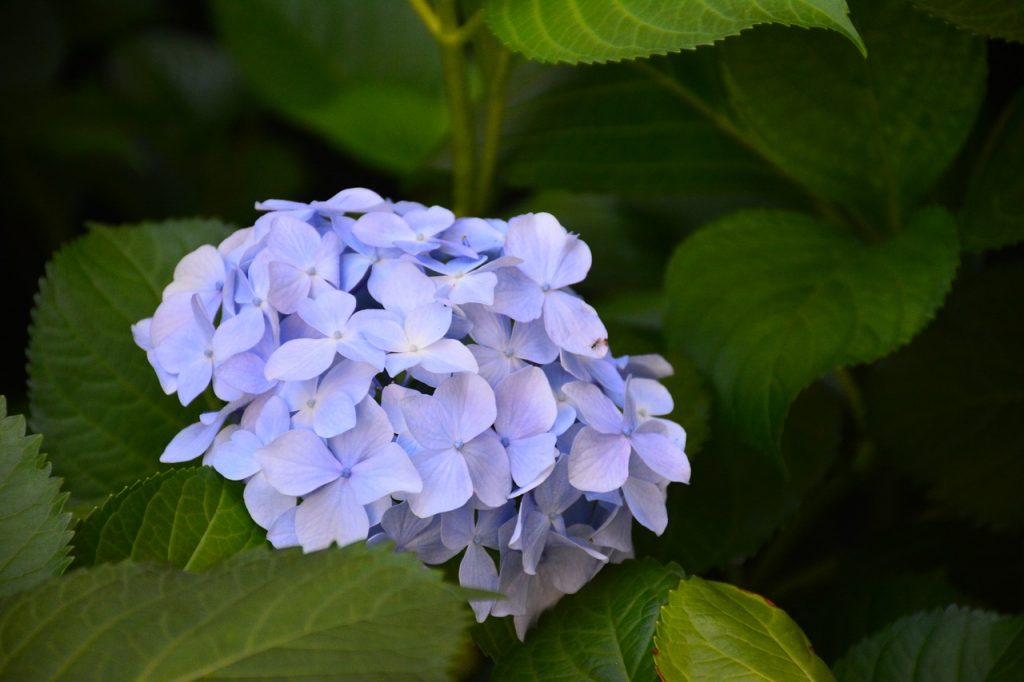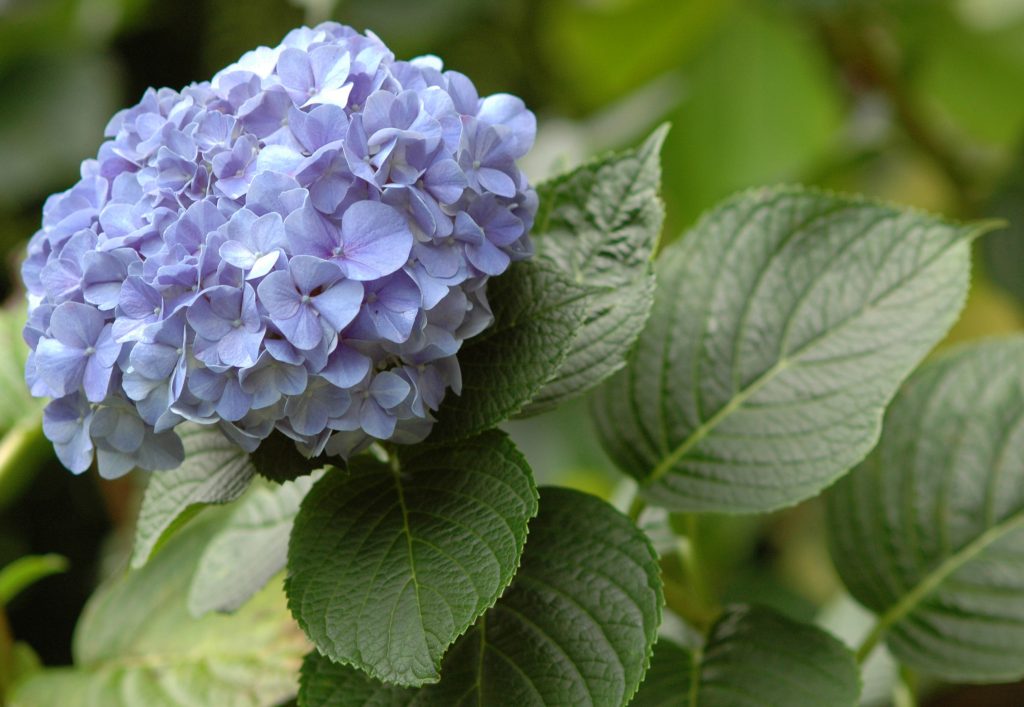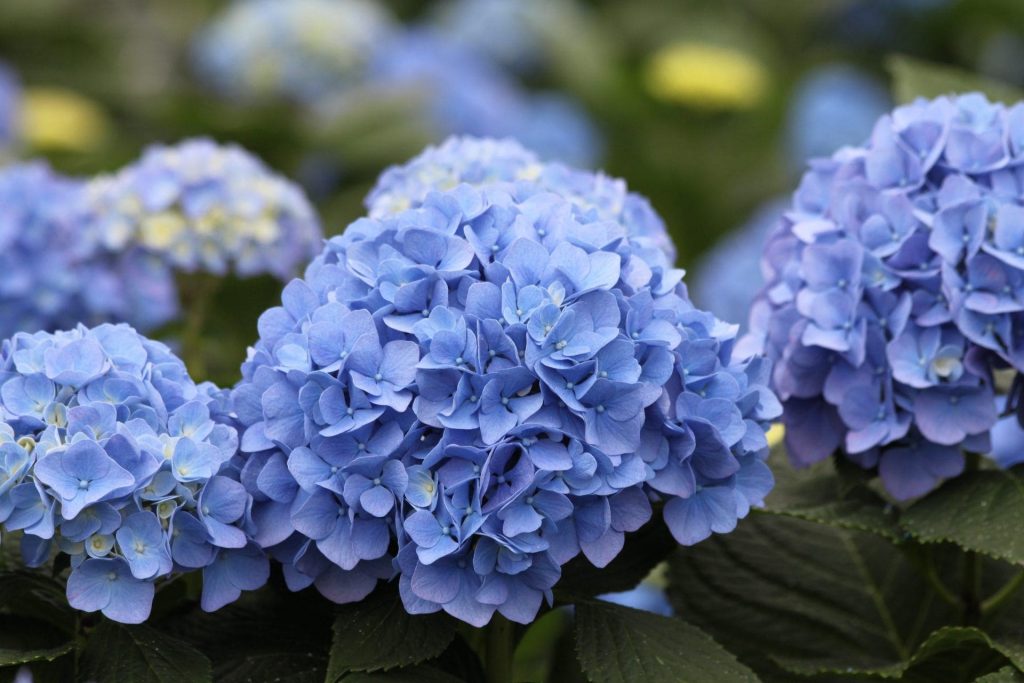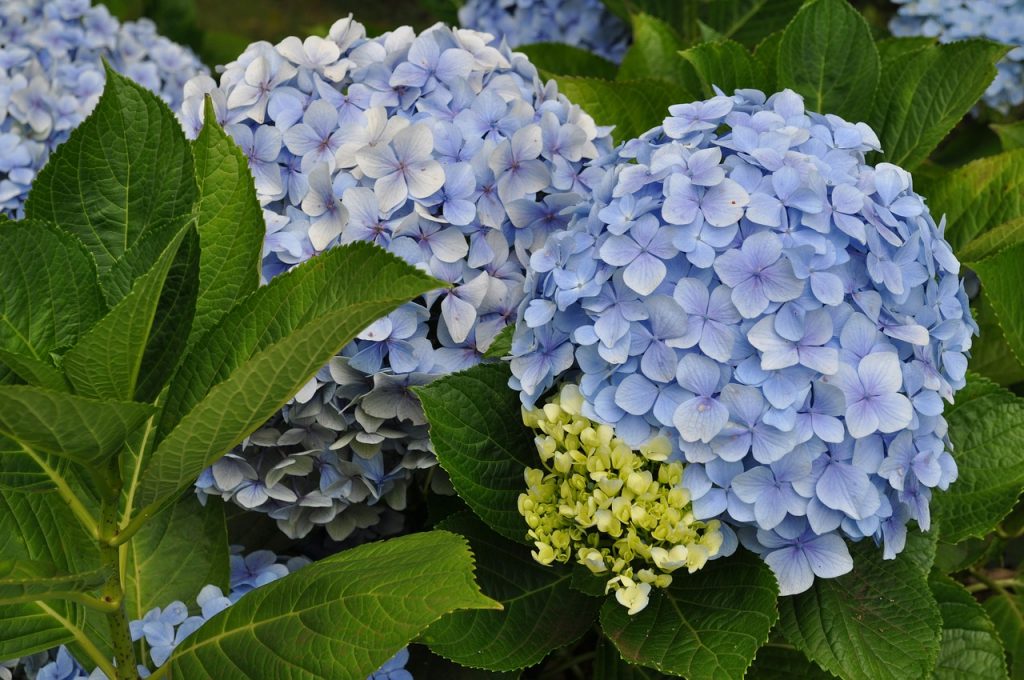Hydrangeas Kyushu - variety description
The Kyushu panicle hydrangea is described as a deciduous shrub cultivated in Japan, China and the Far East. It is used in landscape design for decorating garden plots and park areas. It is appreciated for its unpretentious care, quick adaptation and beautiful appearance.
- Varietal characteristics
- Growing features
- Resistance to low temperatures
- Illumination requirements
- Landing rules
- Timing
- Site selection and preparations
- Selection of planting material and pre-planting preparation
- Landing technology
- Care features
- Watering
- Top dressing
- Formation
- Pre-winter preparation
- Reproduction methods
- Cuttings
- Layers
- Treatment and prevention of diseases and pests
- Chlorosis
- Gray rot
- White rot
- White spot
- Rust
- Practical use
- Gardeners reviews
- Useful videos

Hydrangea kiushu paniculata
Varietal characteristics
An upright, ornamental deciduous perennial shrub.
Botanical description of the kyushu cultivar:
- height up to 2.5-3 m;
- the shape of the leaves is heart-shaped, the edges of the leaf plates are serrated, the ends are pointed, the length is up to 10-12 cm, the surface is glossy, shiny, the main color is dark green, while the back side is 2-3 tones lighter than the top, attached on red petioles;
- paniculate inflorescences, pyramidal shape, length up to 30-35 cm, formed by flowers up to 10 cm in diameter, fast-falling, the color of the buds at the blooming stage is creamy, white when fully blooming, by the end of the budding phase with pink, greenish or blue shades;
- fruits - capsules, length about 3 mm, with a large number of seeds.
The average cost of Hydrangea paniculata Kyushu Pa-60 with a height of about 0.5 m is 1,500.00 rubles.
The first flowering occurs in the third or fourth year after planting. It blooms from the second half of summer until late autumn. Inflorescences and foliage have a pronounced fragrant odor.
Growing features
The variety has a quick adaptation to new growing conditions, incl. quickly adapts to the urban environment.

Hydrangea paniculata kiushu
Resistance to low temperatures
The flower culture is characterized by increased resistance to low temperatures, withstanding a decrease in indicators to -30 ° C-34 ° C. Therefore, when grown in open ground in warm climatic zones, it does not need shelter for the winter.
Illumination requirements
Hydrangea loves good lighting, but with a long stay in direct sunlight, it loses the splendor of flowering, and the inflorescences themselves become smaller and lose their decorative effect.
Landing rules
Compliance with the basic rules when planting a perennial will help reduce the time it takes to adapt to new conditions.

Kyushu hydrangea paniculata
Timing
The best time to plant hydrangeas outdoors is spring. Greenhouse bushes are planted after winter at the final establishment of warm weather, closer to mid-late May. The acquired flower culture, which overwintered in outdoor conditions, is planted in early spring, when the snow cover thaws.
Site selection and preparations
The place for planting paniculate hydrangea is chosen at once constant, because flower culture does not tolerate transplantation. The best option is partial shade or an area with diffused sunlight, protected from a direct wind flow.
On an area with a close occurrence of groundwater for planting hydrangeas, an embankment is made.
Soil requirements: high acidity combined with good air permeability and moisture absorption. Optimal composition: peat, humus, sod, leafy soil and coarse river sand.
Selection of planting material and pre-planting preparation
It is preferable to purchase seedlings in specialized stores. Plants are suitable for planting, in which at least 3-4 main branches have already been formed, and the roots do not show signs of rot and mold.
When buying planting material early, preference should be given to perennials with a closed root system in a container. Before spring planting in open ground, they are stored in a cool room.
Landing technology
For planting a perennial, a hole is dug 0.5-0.8 m wide to the same depth. In this case, the depth can be organized in a smaller size than the diameter, because hydrangea has a superficial location of the root system with horizontal growth. Optimal distance: with a single planting - 1.0-1.5 m, as part of a hedge - 0.7-0.9 m, standard types - from 2 m.
A drainage layer of gravel, small pebbles, broken brick or ceramics is laid out on the bottom of clay soils. Sandy earth is compacted with a clay layer.
Landing technology:
- the roots are pre-soaked in water for 2-3 hours;
- the planting pit is covered with soil, forming an earthen hill in the central part;
- the perennial is placed in the center, straightening the roots and sprinkled with soil, leaving the root collar flush with the earth's surface, the voids are compacted;
- the flower is watered and the base is mulched with a choice of peat mixture, crushed with tree bark, which helps to avoid premature evaporation of moisture.
Care features
Properly organized care of the Kiushu variety paniculate hydrangea includes a proper irrigation regime, timely feeding, annual crown formation and pre-winter preparation.

Hydrangea kiushu photo description
Watering
For irrigation, it is recommended to use soft non-chlorinated water, preferably rainwater or settled tap water. Perennial is hygrophilous and prefers abundant moisture, but at the same time it is able to tolerate short-term drought.
The optimum depth of impregnation of the soil layer is from 10-15 cm.
Irrigation is also combined with sprinkler spraying.
Top dressing
The best feeding option would be mineral nutrition - a mixture designed to fertilize hydrangeas that can be mixed with organic matter. Terms of introduction:
- in spring, in order to activate the growth of vegetative mass, the main share should be nitrogen-containing compounds, for example, urea in the calculation of 30 g per 1 m² of plantings;
- in the summer at the budding stage for abundant long flowering, they are fed with potassium and phosphorus, while reducing the proportion of nitrogen input, for example, 50 g of potassium sulfide together with 50 g of superphosphate;
- in the fall, before the beginning of the dormant phase, to increase the overall resistance of the culture to the upcoming cold weather, preference is given to superphosphate and potassium sulfate, completely excluding nitrogen fertilizers, for example, 70 g of potassium sulfide and 50 g of superphosphate.
Before sheltering for the winter, some gardeners bring humus or leafy soil under a bush, 10-20 kg per plant.
Formation
Panicle hydrangea is characterized by intensive growth, adding 25 cm annually, therefore it needs annual pruning, which allows you to maintain the decorativeness of the perennial. Objectives:
- fresh shoots are shortened to activate the formation of flower buds;
- shoots are cut to the place of growth of 3-5 buds to stimulate young shoots with large inflorescences;
- old perennials are trimmed on a stump for rejuvenation in order to prolong their productive flowering.
Staged formation in the form of a tree:
- on a young hydrangea, a vertically growing leader shoot and accompanying 4-5 lateral branches are chosen;
- cut off other shoots;
- branches growing from the sides pinch;
- the leading shoot is allowed to grow to a height of 1.5 m, then shortened, which stimulates the development of skeletal branches;
- the side branches are removed.
Faded panicles are also subject to pruning. This is carried out before the arrival of snowfalls, tk. The snow cover adhered to the inflorescences becomes an unbearable load for the flower culture - the branches break under the weight of the snow.
Pre-winter preparation
When preparing the plant for a state of dormancy, watering is stopped. Mature shrubs do not need shelter. Warming is required for young, not yet matured, seedlings. They are bent to the ground and covered with coniferous spruce branches.
Snowfalls are dangerous for mature plants, therefore, in order to preserve the veto from damage, they are tied into a single bundle and attached to the support stake.
Reproduction methods
It is easier to propagate panicle hydrangea Kyushu by layering or cuttings. Seed propagation is not used, because the material does not have time to ripen even when grown in warm climates.

Kyushu hydrangea photo
Cuttings
The most suitable time for grafting is spring. For reproduction, take the shoots left over from the spring pruning, cut into 4-5 internodes. They are placed in a stimulating solution with a root former for 2 days, after which they are planted for rooting in a sand-peat mixture, deepening into 2 buds, and covered with polyethylene or glass on top. The cuttings are kept at a temperature of 15 ° C-17 ° C and regularly ventilated. They take root in about a month.
Layers
For reproduction in spring or at the end of summer, the layers from the lower tier are bent to the surface of the earth, fixed with a hairpin in the middle part, buried in the soil, and sprinkled with soil. The aerial part of the shoot is tied to a support stake. Rooting, the cut takes a year. As the root system is finally formed, the abstracted process is cut off from the mother bush.
Treatment and prevention of diseases and pests
With proper care, a perennial is quite resistant to various diseases. However, sometimes there are a number of diseases, more often - fungal etiology.
Chlorosis
When grown on limestone and humus-fertilized soils, the development of chlorosis is often observed, in which the foliage, with the exception of the central vein, lightens and acquires a yellowish tint. Watering with potassium nitrate (4 g per 1 liter of water), followed by root treatment with iron sulfate in a similar concentration, helps to restore decorativeness.
Gray rot
It develops in high humidity, especially in conditions of prolonged rains accompanied by cool weather. Affected leaves turn brown, followed by decay of plant tissue. The fungus that has settled in the inflorescences initially covers individual petals with a brown color, and then destroys the entire bud.
For the treatment of gray rot, the plant is treated with a choice of:
- Bordeaux liquid with a concentration of 1%;
- 0.5% copper oxychloride solution;
- Cuprozan with an active substance fraction of 0.5%;
- Fundazole with a concentration of 0.2%.
Frequency - once every 10 days. The number of required treatments is at least 3. Additionally, during the treatment period, fertilizing with minerals is carried out.
White rot
Fungal disease appears in the form of wet fragments at the base of the shoots, followed by a white bloom - a sign of a settled fungus that destroys plant tissue. With a strong defeat, the bush is dug up and destroyed. With a single infection, irrigate with a fungicide of your choice:
- Fundazole with a concentration of 0.2%;
- Topsin with a share of active substance 0.2%;
- 0.5% Zuparen solution.
Application standard - 10 liters of working fluid per 1 m² of plantings.
White spot
White spot has a fungal etiology. The first signs are the appearance of dark spots with their subsequent lightening. Gradually, the fungus spreads to foliage and shoots. If primary symptoms are detected, the vegetative mass is sprayed with copper oxychloride, Fundazol or Kuprozan.
Rust
The rust fungus appears on foliage, shoots and inflorescences in the form of rusty-brown spots, subsequently forming a dark sporoloid with a yellow edging. Damaged vegetative parts are cut off, and the plant is treated with a choice of:
- Tsinebom (0.5%);
- iron sulfate (3%);
- colloidal sulfur (0.8%).
Frequency - with an interval of 10 days. The required number of treatments is up to 4 times.
Practical use
The main application of paniculata is decorating household plots, courtyards and park areas. When used in landscape design, it is subject to both single planting and disembarkation as part of groups. Allows you to create a tall hedgerow, reliably protecting from wind currents and dust.

Hydrangea kiushu photo:
Gardeners reviews
The frost-resistant hydrangea Kyushu, unpretentious in care, is often chosen by gardeners for decorating their personal plot. The flower culture is also used in the landscape design of urban areas, parks and courtyards.

